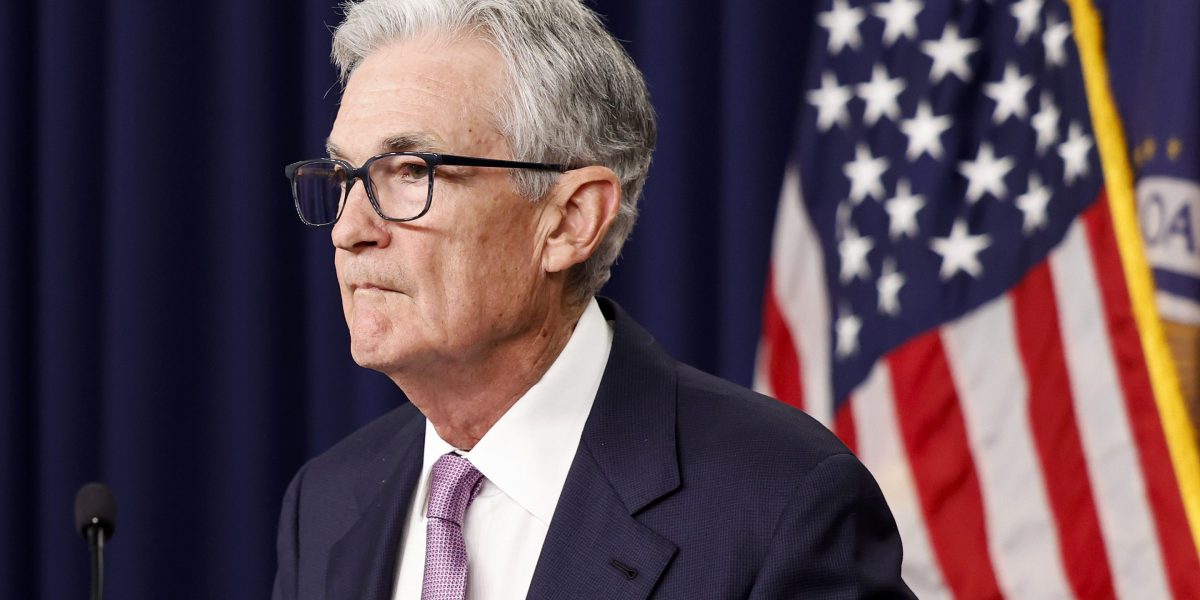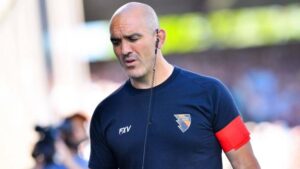Jerome Powell’s power grows after Fed endorses interest rate cut
All but one of the 12 voting members of Federal Open Market Committee supported Powell’s bid to start big with a half-point cut. That’s a key victory for the chair.


One week before Federal Reserve officials gathered in Washington this month, they were split over how fast to lower interest rates.
The economy wasn’t flashing the kind of obvious warning signs that would typically prompt an aggressive response from the US central bank. But a notably weak run of jobs data, including the August employment report the previous Friday, had convinced Chair Jerome Powell that a bigger-than-usual rate cut was necessary to insure against rising risks to the labor market. A pair of inflation reports that week showing price pressures continuing to ease sealed the deal.
When the Fed issued its decision on Sept. 18, forecasts showed a narrow majority of officials favored reducing their benchmark rate a full percentage point or more this year — implying at least one big cut. But a sizable minority penciled in just 75 basis points, suggesting support for three smaller moves.
In the end, however, all but one of the 12 voting members of Federal Open Market Committee supported Powell’s bid to start big with a half-point cut. That’s a key victory for the chair as he tries to prolong an economic expansion many predicted would be over long before now. The lone holdout, Governor Michelle Bowman, called instead for a more measured pace of cuts to avoid undermining progress on inflation.
“The chair always has enormous power,” said Mark Spindel, founder of Potomac River Capital and co-author of a book on the Fed and Congress. “There is a clear success story in Powell’s ability to get all but Bowman on board, and he is a more powerful chairman now.”
Speaking at a post-meeting press conference, Powell called the half-point cut “a good strong start” that made sense from “an economic standpoint and also from a risk management standpoint.”
Another half-point cut can’t be ruled out if the economy begins to stumble, economists say, given the priority Powell has put on keeping the economy near full employment so long as inflation is cooling.
Powell could have the chance to tilt his colleagues toward a half-point cut again in the next few months should data on the labor market once again disappoint. A number of officials speaking in recent days have signaled they’re likely to support quarter-point reductions moving forward, but left the door open to another large cut.
“Given his comments in Jackson Hole, and what we heard from him at the press conference, yes, I think Chair Powell would lean toward cutting 50 basis points again if there were further labor market weakness,” said Matthew Luzzetti, chief US economist at Deutsche Bank.
Three Key Moments
Powell has asserted his leadership at three key moments over the past year.
He signaled a possible peak in rates in December 2023, a time when some officials thought they might have to hike further. After a surprising pickup in inflation in the first quarter of 2024, which startled many Fed officials, he patiently held rates steady until gaining confidence that price pressures began easing again. Some lawmakers complained he was putting the economy at risk. Finally, he opted for a big cut as the first move.
All of those actions were guided by a strong sense that high interest rates were cooling — not cracking — the economy, and inflation could be tamed with less cost to jobs than many economists thought possible.
“Our success in delivering on these goals matters to all Americans,” he said at his Sept. 18 press conference.
Powell framed the cut as taking out insurance against further weakening in the economy – an act of risk management.
“You can take this as a sign of our commitment not to get behind,” Powell said last week. “It’s a strong move.”
A 50-basis-point adjustment to rates is atypical for the Fed outside a crisis. One worry was that it would signal the Fed had grown concerned by signs of economic softening. Powell, instead, said the move was a sign of confidence that inflation was on track to returning to 2%, and, in a rare acknowledgment that a bigger move was his own strong preference, he said he was “pleased” with the decision.
The most recent jobs report not only showed employers added fewer positions than forecast in August but also revealed a weaker pace of hiring than initially estimated for the prior two months. Payrolls were marked down 86,000 across June and July, leaving the three-month average at its lowest since mid-2020.
Risk management, a strategy embraced under former Chair Alan Greenspan, seeks to head off potential threats, even those that appear unlikely to materialize. And with a half-point cut leaving the Fed’s benchmark rate still in restrictive territory, the cost of a large insurance cut was viewed as low by several officials.
“Even after the 50-basis-point cut, I believe the overall stance of monetary policy remains tight,” Minneapolis Fed President Neel Kashkari wrote in a Sept. 23 essay, explaining why he supported the larger move.
Lively Debate
Powell’s calendars show he holds discussions with all 18 of his fellow officials a few days before each FOMC meeting. Those discussions give officials a sense of where the chair stands. Powell’s strong endorsement of the bigger cut at the press conference suggests he favored the half-point cut in the week before the meeting as he began his usual calls.
Some Fed officials who’ve spoken since the meeting have described it, and the run-up to it, as featuring a lively debate.
“There was active deliberations at the meeting,” Kashkari said in a Sept. 23 interview on CNBC. “There was a lot of discussions, obviously, leading up to the meeting.”
Atlanta Fed president Raphael Bostic said the two weeks before every FOMC meeting is a time of “intense discussions.”
In a question-and-answer session after a speech on Sept. 23, he said, “If you want to get coordination, and you want us to all be able to coalesce around one course of action, it’s going to require a lot of communication, engagement, and we do a lot of that.”
There were a handful of officials who saw a case for a quarter-point cut at the September meeting. That included Fed Governor Christopher Waller, one of the FOMC’s most influential members.
In a Sept. 6 speech, Waller made clear he favored lowering rates, but many interpreted his precise wording as making the case for a quarter-point move. In a CNBC interview following the meeting, he said recent reports on consumer and producer prices that followed the speech ultimately pushed him to support a half-point move.








